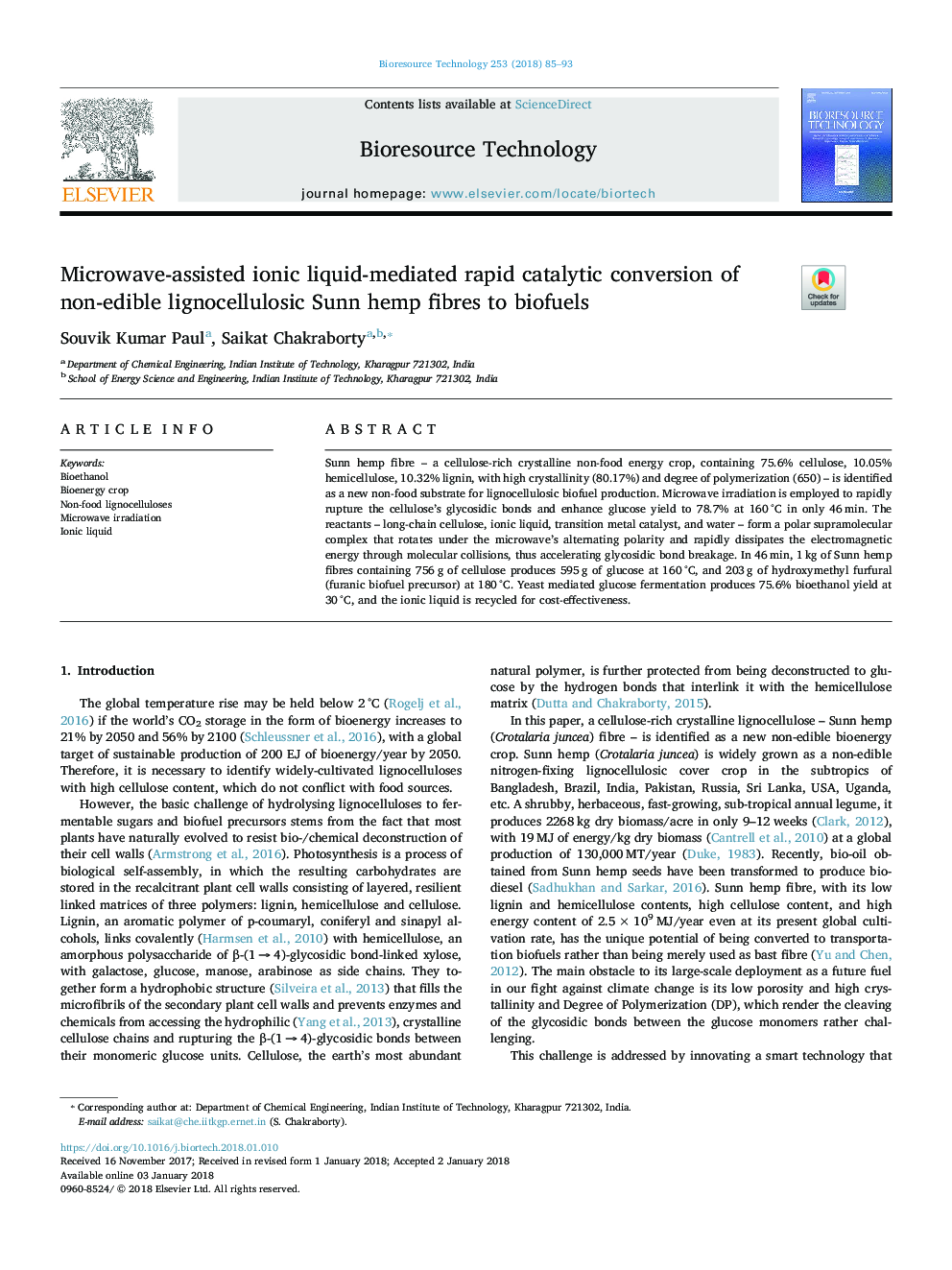| Article ID | Journal | Published Year | Pages | File Type |
|---|---|---|---|---|
| 7068383 | Bioresource Technology | 2018 | 9 Pages |
Abstract
Sunn hemp fibre - a cellulose-rich crystalline non-food energy crop, containing 75.6% cellulose, 10.05% hemicellulose, 10.32% lignin, with high crystallinity (80.17%) and degree of polymerization (650) - is identified as a new non-food substrate for lignocellulosic biofuel production. Microwave irradiation is employed to rapidly rupture the cellulose's glycosidic bonds and enhance glucose yield to 78.7% at 160â¯Â°C in only 46â¯min. The reactants - long-chain cellulose, ionic liquid, transition metal catalyst, and water - form a polar supramolecular complex that rotates under the microwave's alternating polarity and rapidly dissipates the electromagnetic energy through molecular collisions, thus accelerating glycosidic bond breakage. In 46â¯min, 1â¯kg of Sunn hemp fibres containing 756â¯g of cellulose produces 595â¯g of glucose at 160â¯Â°C, and 203â¯g of hydroxymethyl furfural (furanic biofuel precursor) at 180â¯Â°C. Yeast mediated glucose fermentation produces 75.6% bioethanol yield at 30â¯Â°C, and the ionic liquid is recycled for cost-effectiveness.
Related Topics
Physical Sciences and Engineering
Chemical Engineering
Process Chemistry and Technology
Authors
Souvik Kumar Paul, Saikat Chakraborty,
